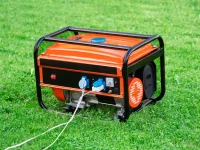Hail Repair Kits and Tools: Are They Worth It?

In the aftermath of a hailstorm, vehicle owners often find themselves facing the dilemma of how to address the unsightly dents and dings left behind. While professional repair services like Paintless Dent Removal (PDR) offer a reliable solution, the advent of hail repair kits and tools has introduced a DIY approach to the problem. These kits promise an easy and cost-effective way to remove hail damage from the comfort of your driveway. But are they truly worth the investment? This article delves into the efficacy of hail repair kits and tools, weighing their pros and cons to help you make an informed decision.
Understanding Hail Repair Kits and Tools
Hail repair kits typically include a variety of tools designed to pull dents out of your vehicle’s bodywork without damaging the paint. Common components include suction cups, glue-based dent pullers, and specialized tools for tapping dents out from behind the panel. These kits vary widely in terms of quality and price, with options available for both amateur car enthusiasts and more experienced DIYers.
The Pros of DIY Hail Repair
- Cost Savings: The most apparent advantage of using a hail repair kit is the potential cost savings. Professional Paintless Dent Removal (PDR) services can be expensive, especially for extensive damage, and using a DIY kit can significantly reduce the financial burden.
- Convenience: With a hail repair kit, you can address dents and dings on your schedule without the need to book appointments or leave your car at a repair shop. This convenience is a significant plus for busy individuals.
- Learning Opportunity: For those inclined towards automotive maintenance, using a hail repair kit can be an excellent learning experience. It allows car owners to gain a deeper understanding of their vehicle’s bodywork and how to care for it.
The Cons of DIY Hail Repair
- Risk of Further Damage: Without the proper training and experience, there’s a significant risk of inadvertently causing further damage to your vehicle. Incorrect use of tools can stretch the metal or damage the paint, leading to more costly repairs.
- Time-Consuming: Successfully removing dents using a DIY kit requires patience and time. What might take a professional a few hours could end up taking days for an amateur, with no guarantee of success.
- Limited Effectiveness: DIY kits are generally most effective on small, superficial dents. Deep or complex dents, or those located in difficult-to-reach areas, may not be fully repairable with a kit, necessitating professional intervention.
Making the Decision: Are They Worth It?
The decision to use a hail repair kit should be based on several factors, including the extent of the damage, your skill level, and your willingness to accept the risk of potential mistakes. For minor damage and those with a degree of mechanical aptitude, a DIY kit can be a cost-effective solution. However, for extensive damage or dents that are deep or located near edges, professional repair is likely the safer and more reliable option.
Tips for Those Considering DIY Hail Repair
- Research Thoroughly: Before purchasing a kit, research different brands and types to find one that suits your skill level and the specific needs of your vehicle.
- Practice First: If possible, practice using the tools on an old panel or a less visible part of your car to get a feel for the technique required.
- Know When to Call Professionals: Recognize your limits. If you’re not achieving the results you hoped for, it’s time to consult a professional to prevent further damage.
Conclusion
Hail repair kits and tools offer a tempting proposition for those looking to fix hail damage without the professional price tag. While they can be effective for minor repairs and offer a convenient and educational approach to vehicle maintenance, they come with risks that should not be overlooked. Ultimately, the decision to use a DIY hail repair kit should be made with careful consideration of the potential downsides and an honest assessment of your repair abilities. In many cases, the assurance of professional quality work may well be worth the extra cost.







